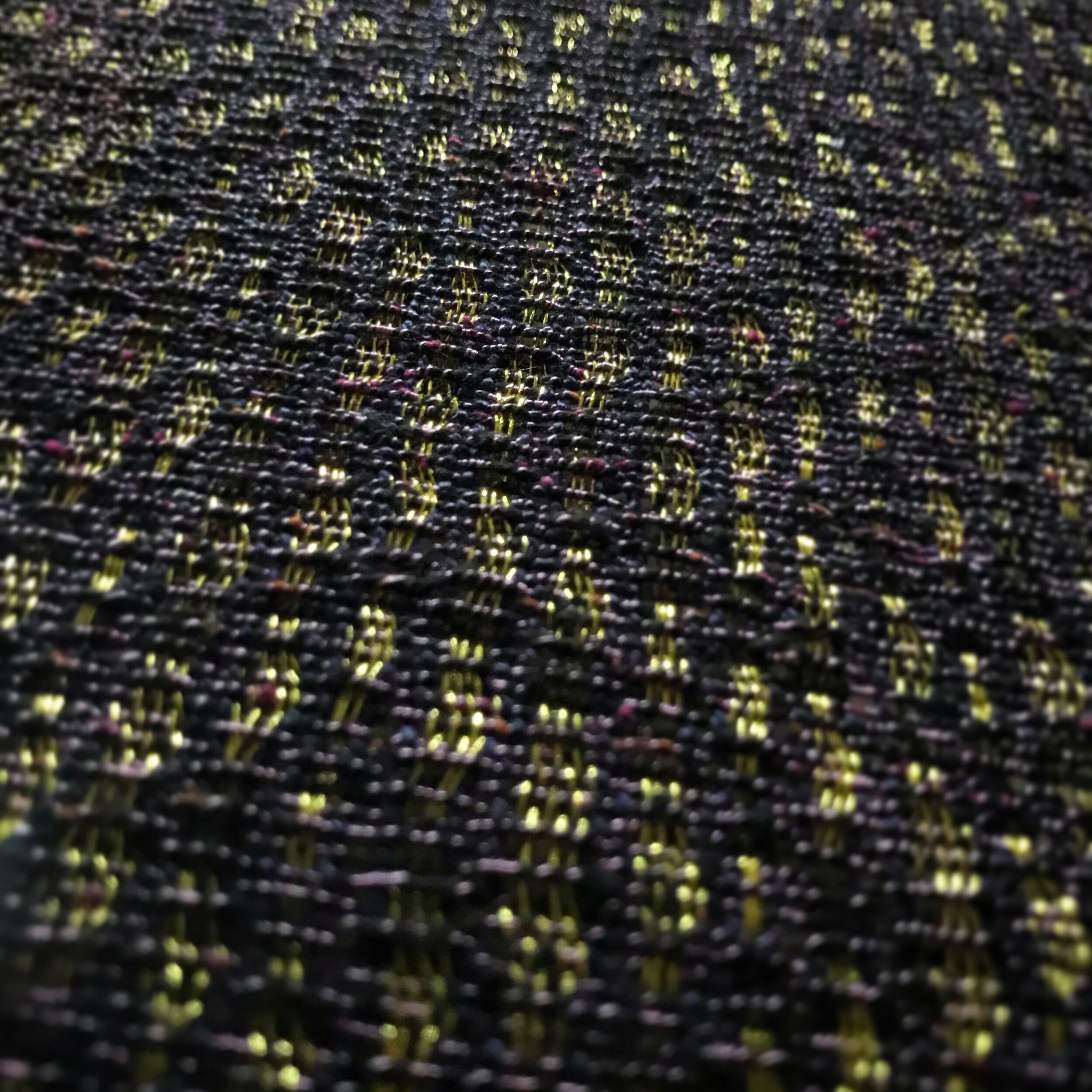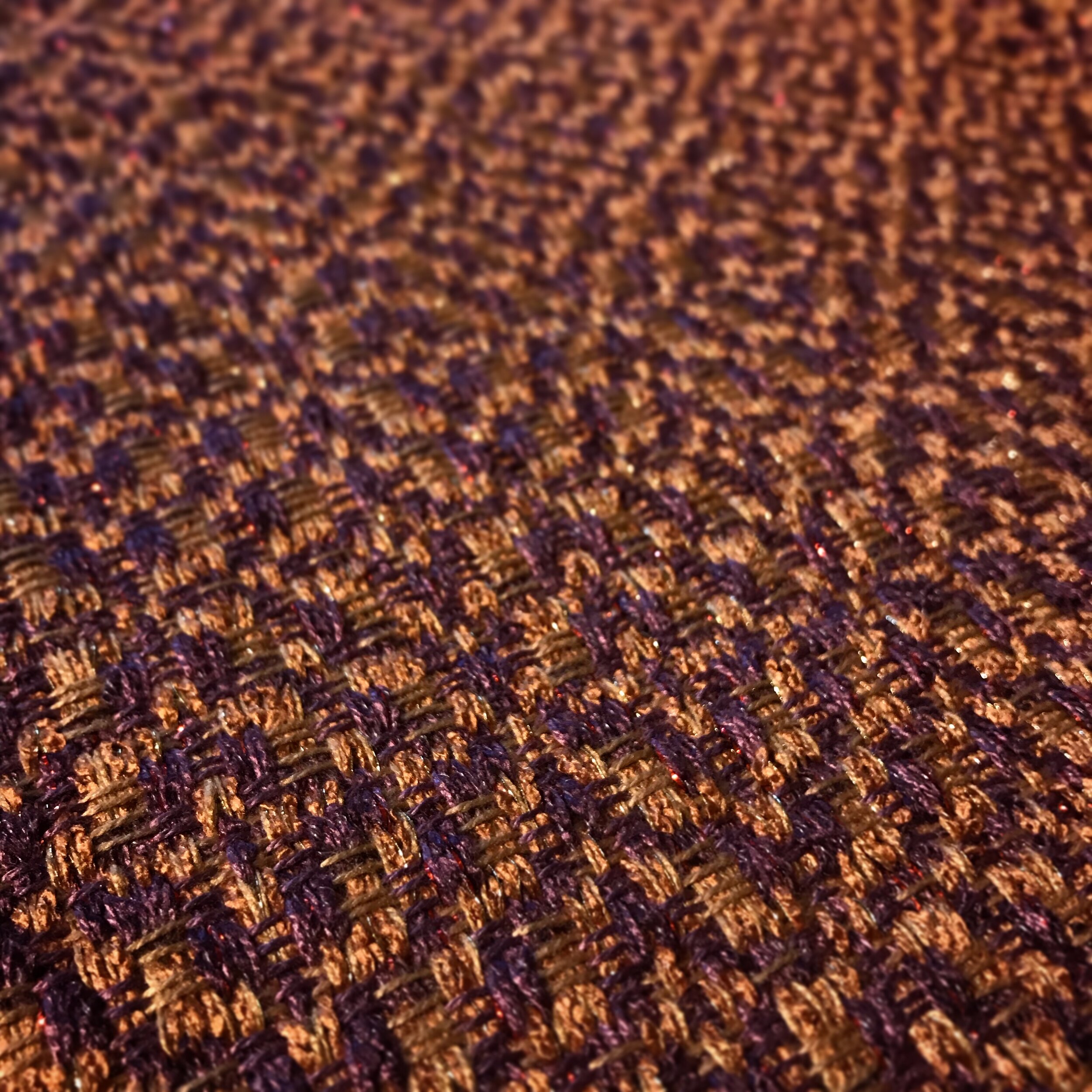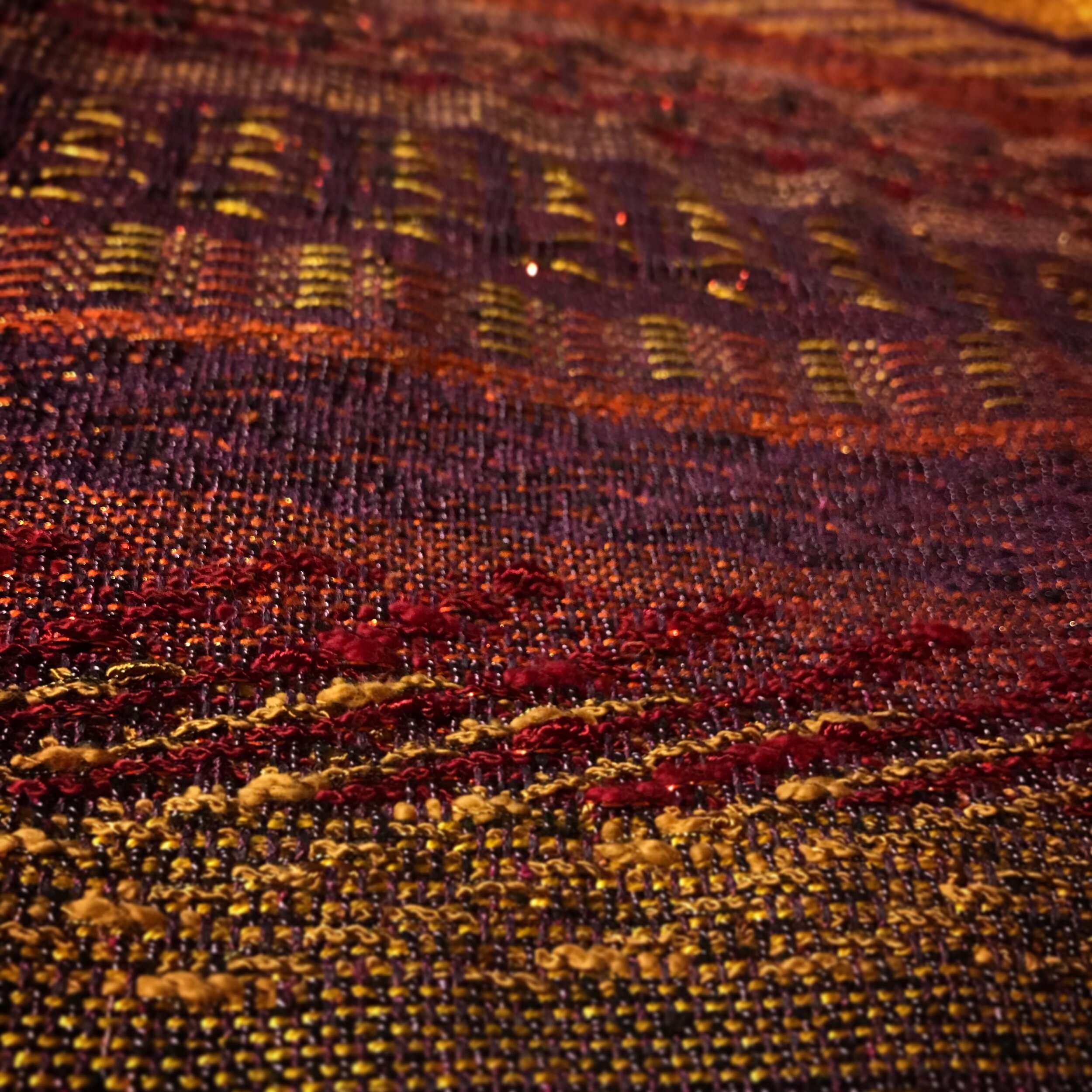Seasonal Spirits
Rituals, ceremonies and meditations on the cycle of the seasons.
Աշուն Ոքի. Ժառանքում/Ashoun Voki: Zharrankoum
Fall 2019
A ceremonial procession for the Autumnal Equinox.
This performance expresses the manifestation of the spirit of Autumn via layered costuming in handwoven and found fabrics, representing the three periods of fall:
The turning of the colors, the falling of the leaves, and preparation for winter’s sleep.
—
Ceremonial performers: Augusta Rose Morrison + Jo Messer
Floral Crowns by Ollie Dodt
Photography by Noah Elliot Morrison
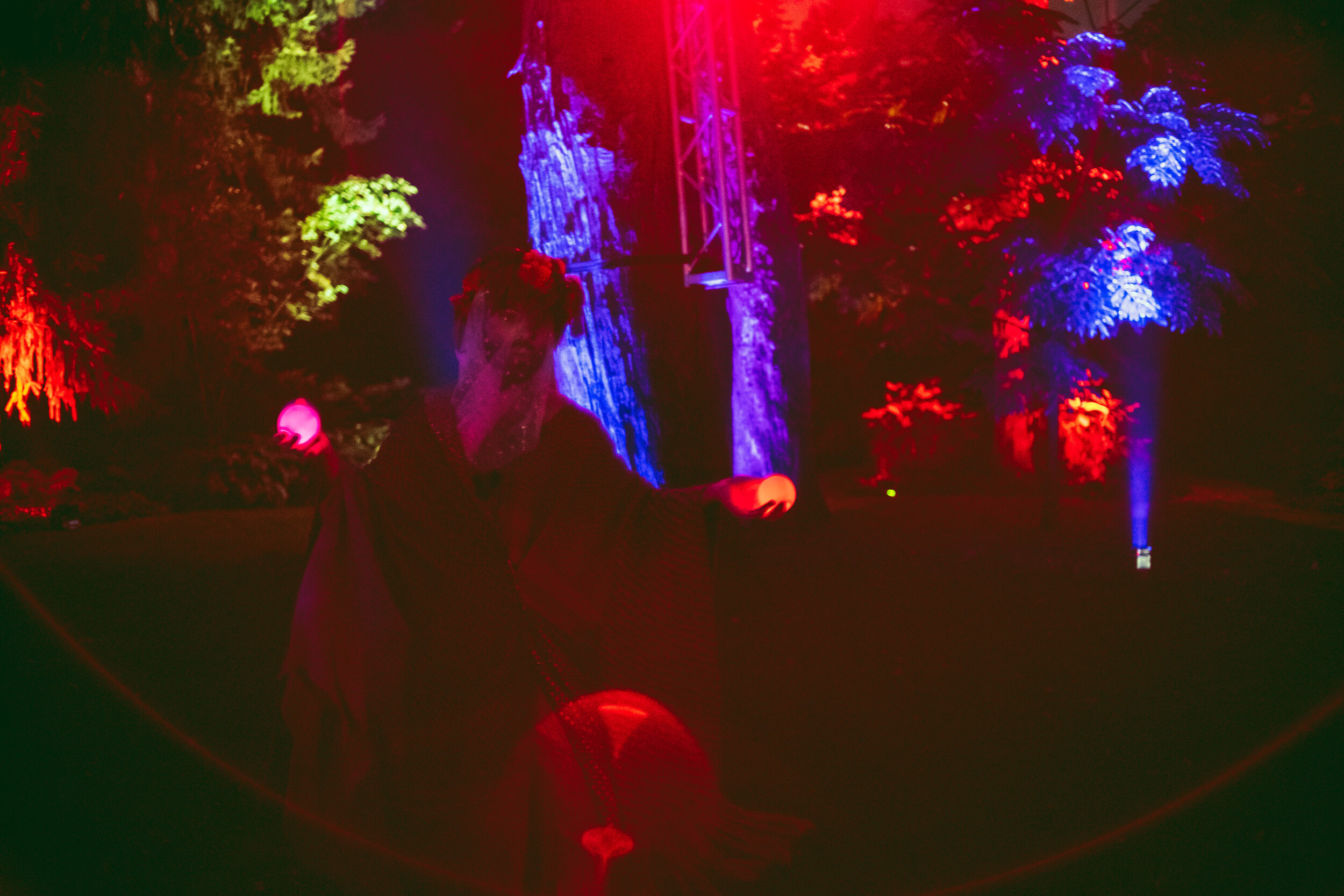
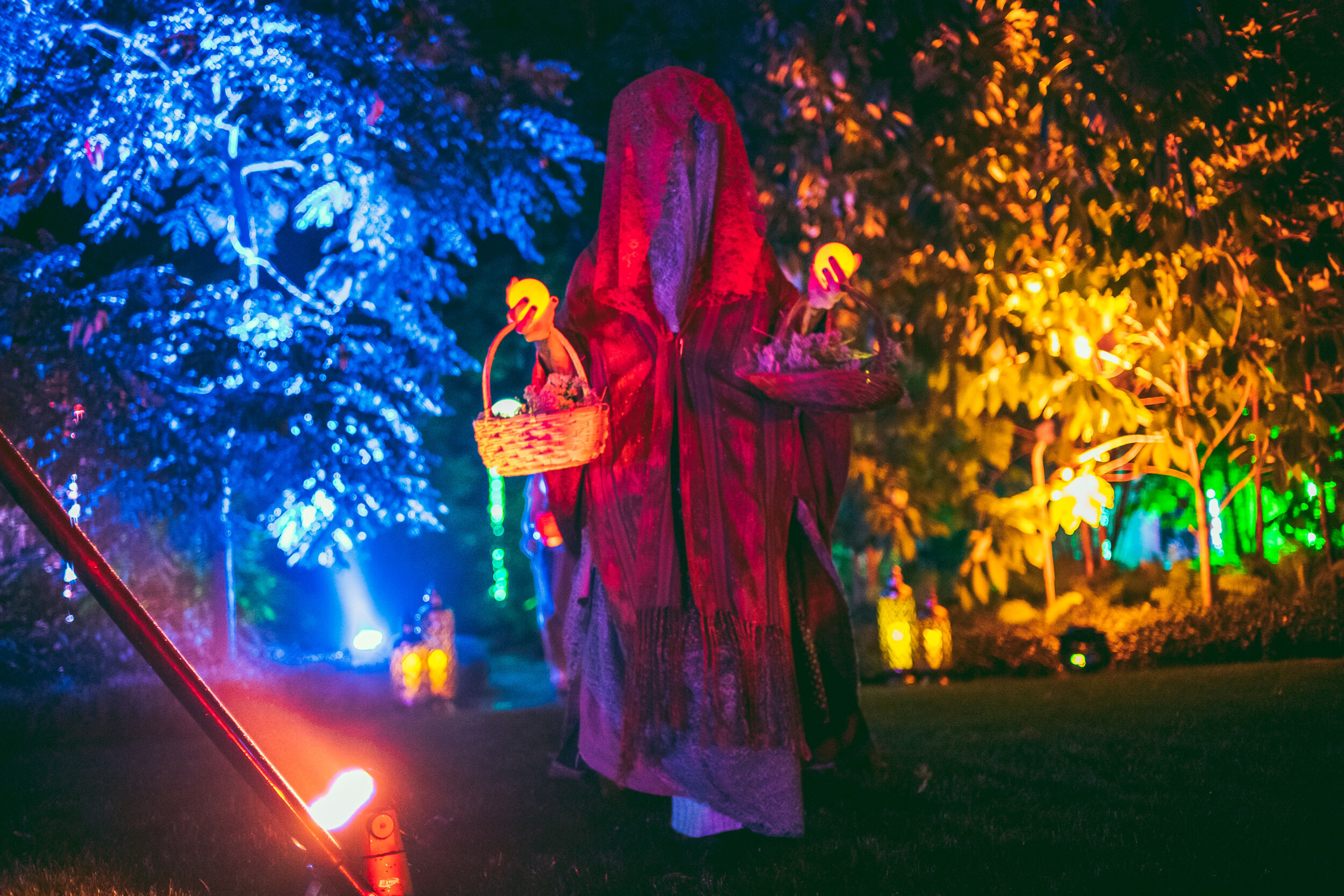


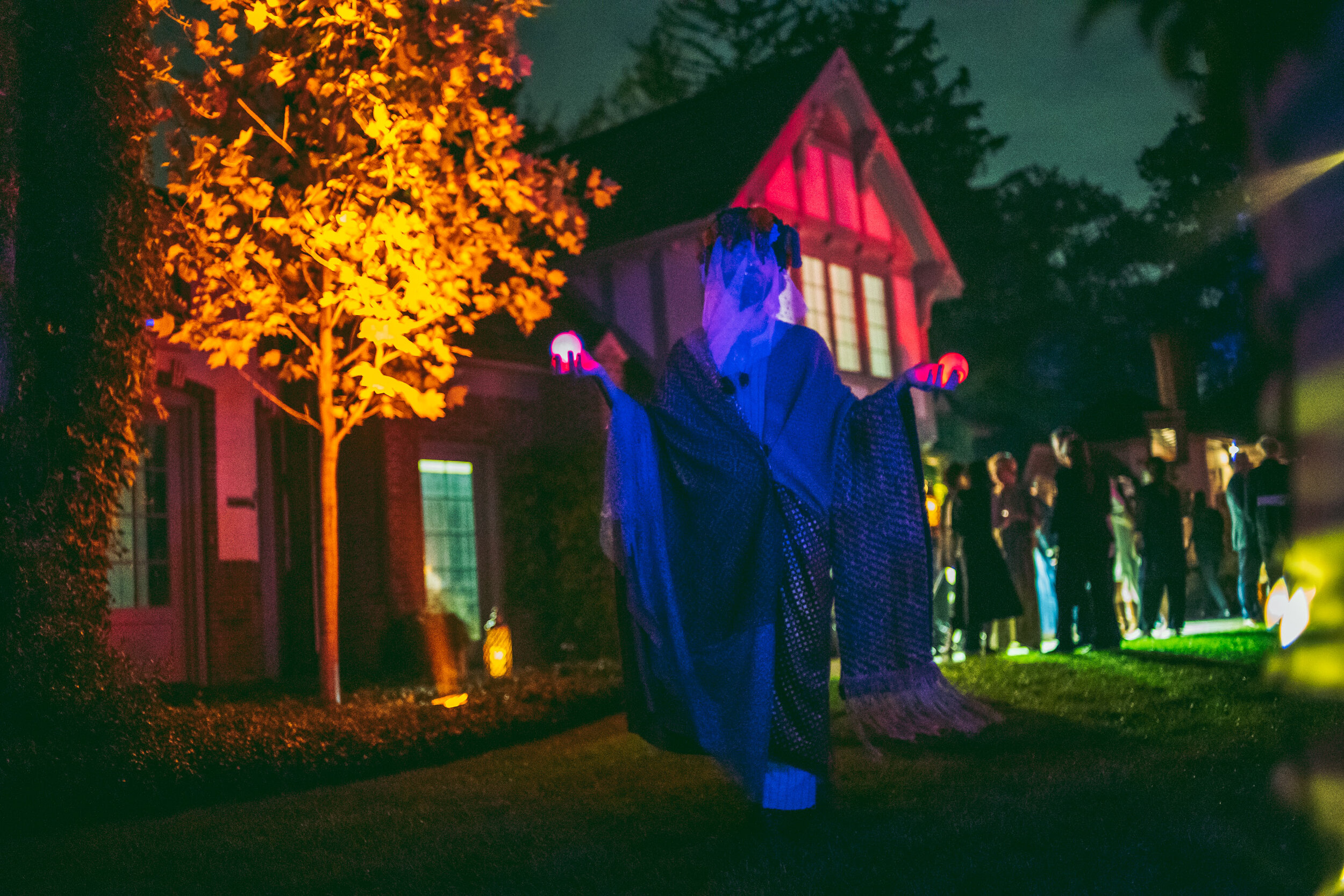
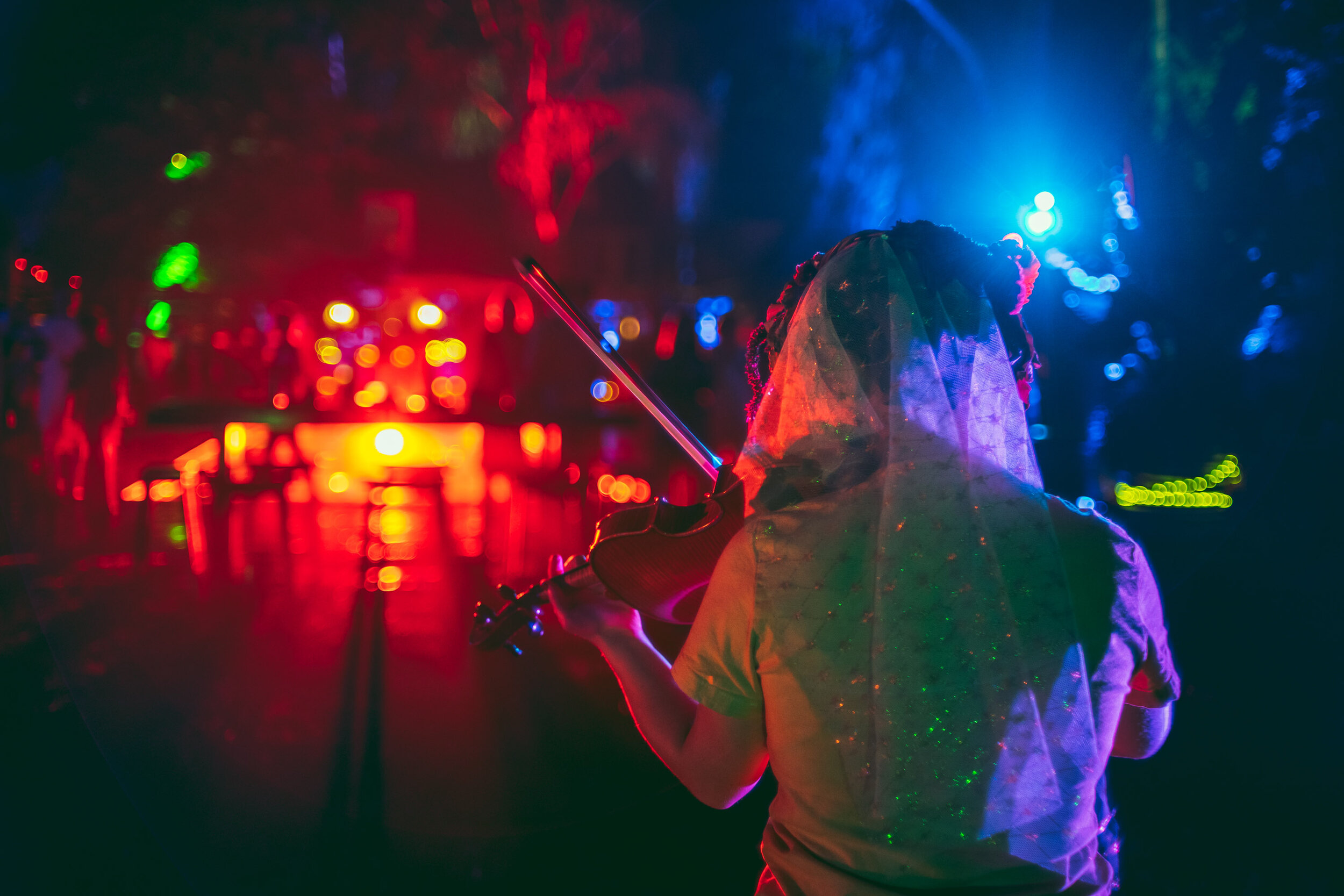
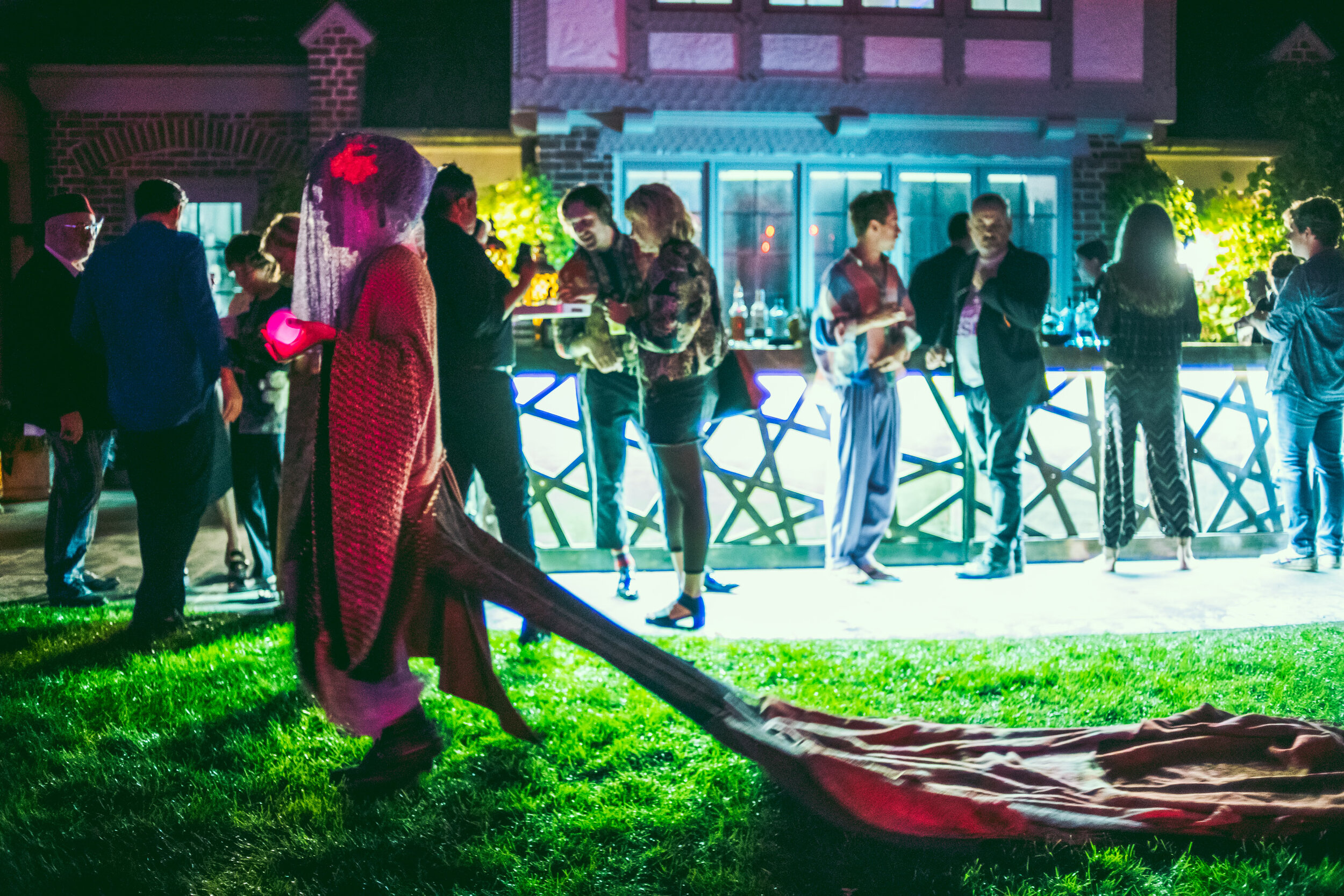
Ashoun Voki woven costume elements: silk, cotton, rayon, metallic polyester all woven on 4 shafts
DARAZ | Amanor
Spring 2016
Temporary temple spaces were created to hold participatory rituals drawing on pre-Christian practices in the Armenian tradition. Temple clerics were dressed in ceremonial attire inspired by traditional Armenian costume with covered faces to draw focus away from the human element and encourage spiritual communion.
Amanor is an ancient Armenian New Year celebration occurring twice in the calendar year. Once for the Spring Equinox and another at the time of harvest.
Participants were invited by clerics to receive the blessing of Spring in exchange for meditating on the following:
In the past year, what in your life has passed? From that death what seed has emerged to bring new life?
Offerings on two strips of fabric, black for what has passed and green for new life were tied to overhead cords. After adding their offerings, participants were anointed with fresh parsley and received the gift of an egg, traditionally dyed with onion skins, as symbols of the new life of the Spring season.
Photography by Oksana Mirzoyan
DARAZ | Amar
Summer 2016
Amar is Armenian for Summer, a time when plants produce in abundance— but left unchecked can overextend beyond their means. Participants in this Rite of First Harvest were allowed into the space one by one and offered a plum, a symbol of this abundance, and instructed to return when only pit remained.
While meditating on places they may have overgrown, participants were given space to symbolically prune and burn such branches—followed by burying their plum pit in sand toward more directed, intentional growth.
Photography by Sean Yalda.
Dragon Well Spring
Winter 2015
Dragon Well Spring, detail // Hand Dyed Linen // Experimental Honeycomb Weave
Chinese tea drinking functions as an informal daily ritual, with emphasis on slowing down to appreciate one's company, one's natural surroundings and the essence of the leaf.
Dragon Well Spring tea, or 龙井茶, is grown in the valleys near Hangzhou in the Zhejiang province of China. The following tea service was the result of a 2 week exchange visit exploring craft, culture and tea in the city of Hangzhou.
Through the ceremonial sharing of tea, guests were invited to engage in conversation on the spirit of the spring season, a time for moderation, stability and re-acquaintance with the verdant earth.
Brazen Upstart // Salt Fired Temmoku Body, Wheel-thrown // Waxed Linen and Reed Handle
Elegant Continuity // Salt Fired Temmoku Body, Wheel-thrown // Waxed Linen and Reed Handle


